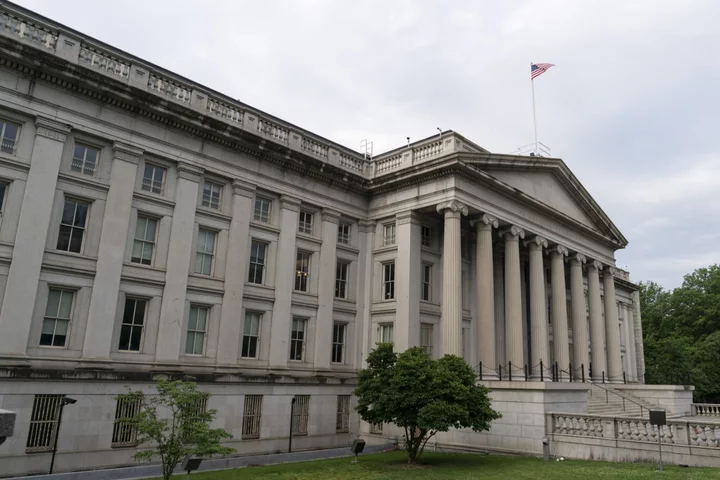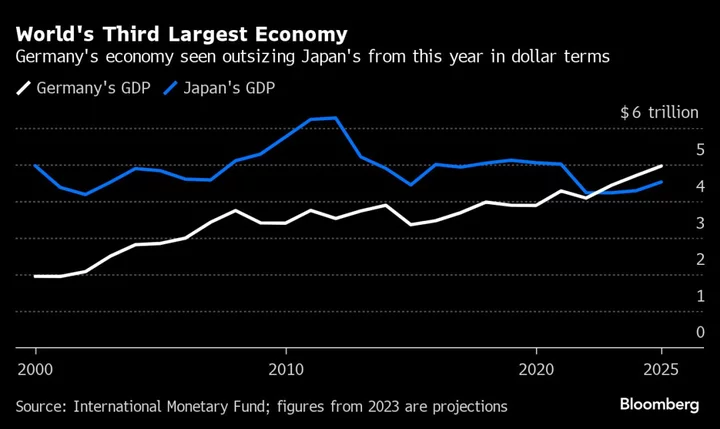The US Treasury boosted its estimate for federal borrowing for the current quarter as it addresses a deteriorating fiscal deficit and keeps replenishing its cash buffer.
The Treasury Department increased its net borrowing estimate for the July through September quarter to $1 trillion, well up from the $733 billion amount it had predicted in early May.
The new amount, published on Monday, is a record for the September quarter and in excess of what some close watchers of the figure had expected. JPMorgan Chase & Co. had penciled in $796 billion. Lou Crandall at Wrightson ICAP LLC predicted $885 billion.
Part of the higher borrowing estimate is due to a bigger cash balance planned for the end of September. The Treasury bumped that number up to $650 billion, from the $600 billion it had anticipated three months ago. The cash stockpile — known as the Treasury General Account, or TGA — is currently about $552 billion.
Since Congress and the White House agreed to suspend the debt limit in early June, the Treasury has been ramping up its cash balance — which debt managers had run down toward zero as they made good on federal obligations without being able to increase borrowing.
Deficit Dynamics
Bond dealers have foreseen US funding needs rising over the next several quarters thanks to a deteriorating budget deficit and to the Federal Reserve’s shrinking of its holdings of Treasuries — a process that effectively forces the government to sell more to the public.
Read More: Traders Brace for $102 Billion Wave of Treasury Bond Sales
Jay Barry, head of US government-bond strategy JPMorgan, was among those expecting the Treasury to boost its quarterly financing estimate, based on “the fiscal trajectory, the outlook for the Fed’s balance sheet” and “expectations for Treasury’s cash.”
The Treasury said Monday that $83 billion of the increase in the borrowing estimate for the current quarter was due to projections for weaker revenues and higher spending.
“Extrapolating the current trend, based on historical deficit seasonal trends, would leave the deficit tracking $1.8 trillion,” JPMorgan’s Barry wrote in a recent note. The gap was $1.39 trillion for the first nine months of the current fiscal year.
Read More: US Racks Up $652 Billion in Debt Costs as Rates Hit 11-Year High
Meantime, for the October through December quarter, the Treasury said it expects to borrow $852 billion, with a cash balance of $750 billion for the end of the year. The all-time high for quarterly borrowing of almost $3 trillion was hit in April-to-June 2020, thanks to the pandemic crisis.
The Treasury on Wednesday will announce plans for its so-called refunding of longer-term securities. Dealers expect US debt managers to lift coupon-bearing debt sales across the yield curve — with potential exceptions or smaller bumps for notes less in demand.









